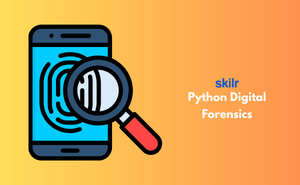👇 CELEBRATE CLOUD SECURITY DAY 👇
00
HOURS
00
MINUTES
00
SECONDS

Python digital forensics refers to the use of the Python programming language in the field of digital forensics, which involves investigating and analyzing digital devices and data to gather evidence for legal purposes. Python's versatility and rich ecosystem of libraries make it well-suited for various tasks in digital forensics, such as parsing data structures, analyzing filesystems, extracting information from different file formats, and automating repetitive tasks. Python scripts can be used to process and analyze large volumes of data quickly, aiding in the discovery and interpretation of evidence in digital investigations. Its open-source nature also allows for collaboration and the development of custom tools tailored to specific forensic requirements.
Why is Python Digital Forensics important?
Who should take the Python Digital Forensics Exam?
Python Digital Forensics Certification Course Outline
Python Fundamentals
Digital Forensics Basics
Python Libraries for Digital Forensics
Data Analysis and Visualization
Scripting and Automation
Advanced Topics
Industry-endorsed certificates to strengthen your career profile.
Start learning immediately with digital materials, no delays.
Practice until you’re fully confident, at no additional charge.
Study anytime, anywhere, on laptop, tablet, or smartphone.
Courses and practice exams developed by qualified professionals.
Support available round the clock whenever you need help.
Easy-to-follow content with practice exams and assessments.
Join a global community of professionals advancing their skills.
(Based on 441 reviews)